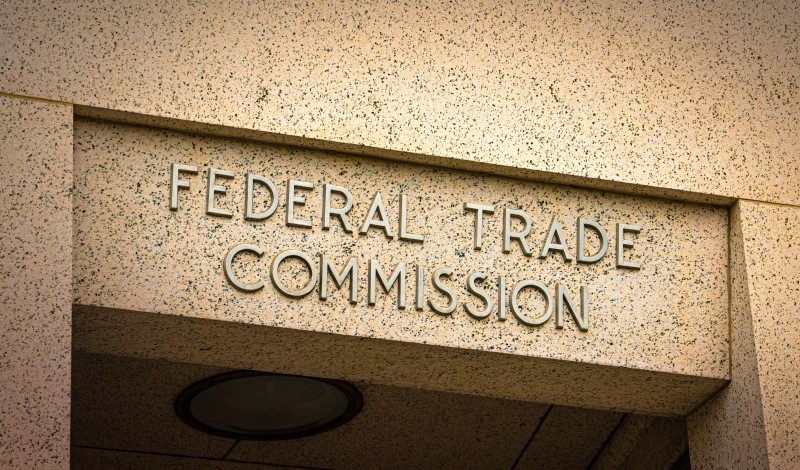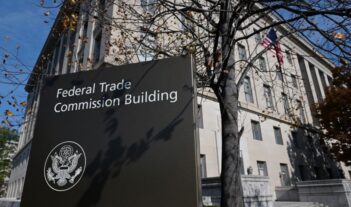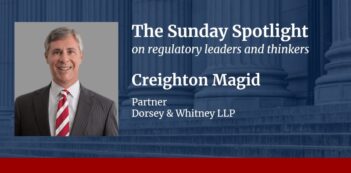
The FTC’s proposed changes to its premerger notification form are unlikely to survive judicial review.
The Federal Trade Commission (FTC) recently announced proposed changes to Hart-Scott-Rodino (HSR) premerger notification form. This proposal, alongside proposed changes to federal merger guidelines, is part of the Biden Administration’s more aggressive approach to U.S. merger law. Although the merger guideline revisions are receiving most of the attention, the proposed HSR premerger notification form revisions could well have the more substantial lasting impacts.
The premerger notification form is part of the premerger review process established by the Hart-Scott-Rodino Antitrust Improvements Act of 1976. Under this process, large mergers must be reported at least 30 days prior to closing. This allows the antitrust agencies time to determine whether further scrutiny of a transaction is warranted. If the agencies are concerned that a proposed merger might violate the antitrust laws, they can issue a request for additional information about the merger, called a second request, and get an additional 30 days to decide whether to challenge it.
The HSR premerger notification requirements address a basic problem of antitrust law: You cannot “unscramble an egg.” Once a merger is finalized, businesses begin intermingling their operations, personnel, finances, business plans, trade secrets, and intellectual property. The premerger notification process allows the antitrust agencies to pause pending mergers to allow for investigation of their potential competitive effects. Importantly, the premerger notification process was intended not to impede or substantially burden mergers. It was also designed not to entail the creation of new information nor to create any routine delays in the consummation of deals.
Some parts of the premerger notification process are dictated by the HSR Act. For instance, Section (a) specifies the transactions to which the notification process applies and Sections (b)(1) and (e)(2) specify 30-day waiting periods and procedures relating to materials that must be provided as part of the HSR process, as well as additional materials the agencies can request.
Section (d), however, calls on the FTC to issue rules governing other aspects of the premerger notification process. These rules are to be developed using informal rulemaking under Section 553 of the Administrative Procedure Act. According to Section (d), these rules “shall require that the notification required under subsection (a) be in such form and contain such documentary material and information relevant to a proposed acquisition as is necessary and appropriate to enable the Federal Trade Commission and the Assistant Attorney General to determine whether such acquisition may, if consummated, violate the antitrust laws.”
The rules governing the premerger notification process, therefore, carry the force of law and are binding on both merging parties and the courts.
The proposed changes to the merger notification form are extensive. Perhaps the best way to capture their scope is to note the FTC’s own estimate of annual compliance costs, which would increase from approximately $120 million today to more than $470 million under the proposed changes. That amount exceeds the $465 million combined 2023 antitrust budgets for the FTC and the U.S. Department of Justice’s Antitrust Division.
Consider one example of the proposed changes. Parts 4(c) and 4(d) of the current premerger notification form require merging parties to provide copies of “all studies, surveys, analyses, and reports which were prepared . . . for the purpose of evaluating or analyzing the acquisition” and “all confidential information memoranda . . . that specifically relate to the sale.” The proposed changes would require an additional “narrative that would identify and explain each strategic rationale for the transaction.” This narrative would not have been created in the course of evaluating a transaction; creating it will come at a real cost in terms of billable hours and executives’ time.
More importantly, the narrative requirement effectively calls for the parties to prepare a reply brief to a potential future challenge without knowing the specific arguments that the antitrust agencies might make against the transaction. The prejudicial value of such a narrative is breathtaking.
The proposed changes also require new information about labor market conditions. This, again, requires creating information that firms are not likely to maintain in the ordinary course of business. This could be particularly significant, given the recent provenance of the agencies’ concern with labor-market competition issues. Perhaps in another few years, the agencies will have successfully litigated enough of these cases to give shape to this evolving area of law. But requiring this information today would merely indulge the agencies’ fishing expeditions.
The proposed changes are likely to face a rocky path ahead. To start, they appear to violate legislative intent that HSR not unduly delay transactions or require the production of materials the firms did not already create as part of evaluating the transaction. Legislative intent, however, is always difficult to evaluate.
More likely to succeed will be challenges that argue that the proposed changes are arbitrary and capricious. The HSR Act limits the FTC’s authority to requiring the production of information that is “relevant to a proposed acquisition as is necessary and appropriate . . . to determine whether such acquisition may, if consummated, violate the antitrust laws.” And this text must be read in conjunction with the statutory authority to make second requests that “require the submission of additional information or documentary material relevant to the proposed acquisition.” The proposed rules do not square with these limits.
A natural reading of what it means for materials to be “relevant to a proposed acquisition” would limit such materials to those that firms have themselves produced in evaluating the transaction. The agencies, however, would instead expand the universe of relevant materials to include potentially anything that might inform their determination of the transaction’s legality. Courts are likely to say that the required materials must be narrower than that.
Another question will be the meaning of “necessary and appropriate.” One issue is whether appropriateness should be determined with respect to purpose—whether it is appropriate for the agencies to use the HSR process to advocate novel interpretations of antitrust law. Another issue is that “necessary” and “appropriate” are best read together. Given that all necessary information could be acquired through a second request, “appropriateness” is a question of whether “necessary” information should be requested of all transactions subject to premerger notification or only of those subject to second requests.
The premerger notification process serves an important function but it is also a tax on all mergers. “Appropriate” rules would balance the costs of this process while maximizing its benefits. Rather than consider this balance, the proposed changes ignore appropriateness, the primary factor that Congress had intended for the agencies to consider, and they rely instead on an overexpansive understanding of necessity. The effect of these considerations is to lessen substantially the likelihood that the proposed changes to the HSR premerger notification process will survive judicial review.




